A SLING CAN BE MUCH MORE THAN A CARRY STRAP
That strap you carry your long gun with may be a lot more than just a way to sling your gun. A long time ago, people thought only of carrying the gun when considering slinging a rifle. But somewhere along the line of how these things evolve, someone figured out that the sling could also be an aid to precision shooting. Then someone figured out how to carry the long gun in such a way that it could be rapidly brought to bear on an opponent without first having to unsling the gun.
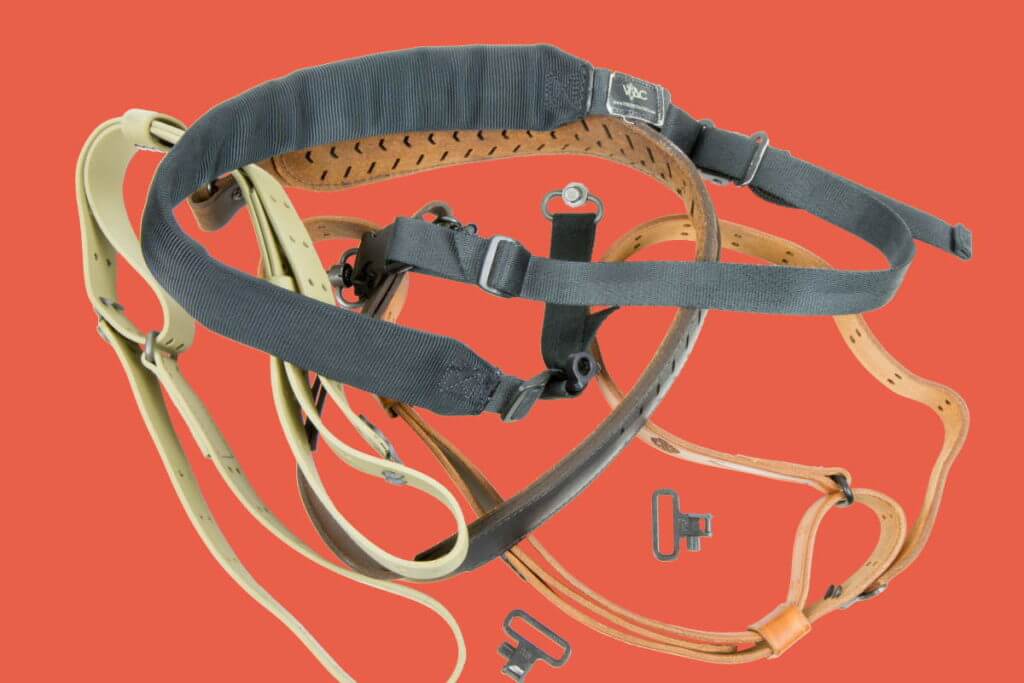
So, there are two major reasons to put a sling on a long gun, and that includes shotguns. The first reason is obvious. It gives the shooter a way to carry the gun that allows the carrier’s hands to be free to do something else. It’s kind of like a holster for a handgun. It gives the user a way to carry the gun and keep it close while allowing the carrier to do whatever is wanted with his hands.
One of those things that the carrier might need to do with his hands is to transition from shooting a long gun to shooting a handgun. It happens all the time. The long gun shooter runs out of ammunition for the long gun, or the long gun malfunctions. When that happens, the most efficient way to stay in the fight and defend yourself might be to draw the handgun instead of trying to correct the malfunction or reload the long gun.
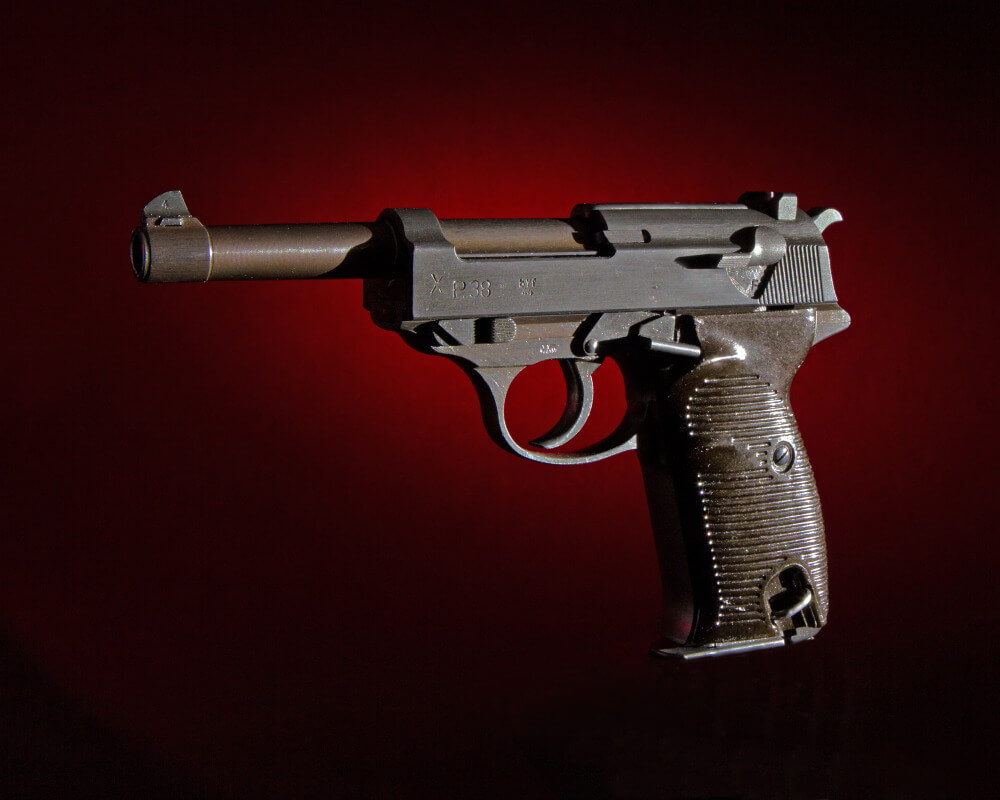
The other reason for a sling is an aid to precision or accurate shooting. A leather or fabric strap can actually help to improve a shooter’s ability to fire small groups.
The first slings were probably just a hunk of rope or cord tied around the long gun so that the owner could carry it without having to use his hands. Then the material used changed and now materials are fabric as well as leather. And designs changed also. One of those changes was to design a sling that could also be used to improve precision shooting. And that’s the purpose of the very familiar M1907 military rifle sling.
The M1907 is two lengths of 1 1/4” wide leather strap. They are connected together in such a way that the sling can be used to steady the aim with a long gun. Doing so can improve a shooter’s precision because it relieves tension on muscles used to hold a gun still while aiming. With the sling, instead of the shooter’s muscles having to exert energy to keep the gun on target, the sling applies tension to the arm of the shooter so that the shooter does not need to use muscle strength to aim.
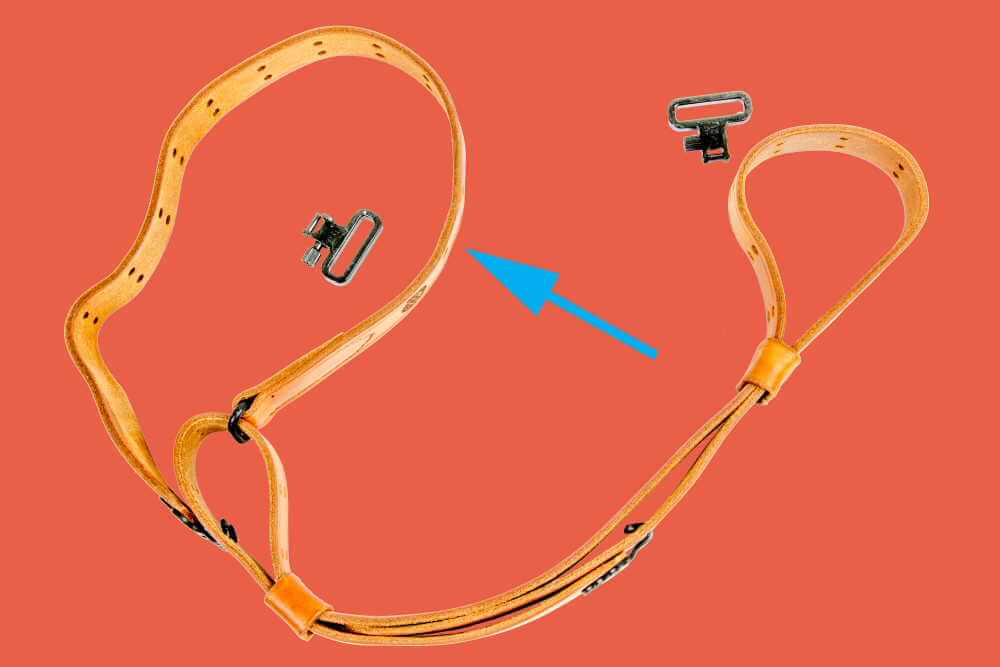
Slinging-up or looping-up with a M1907 military sling is something you get better at with practice, and training from a good source like Gunsite helps. And looping-up is something that you’ll have to practice if you want to do it quickly. To get started, first locate the sling’s shorter length of strap. It has a metal loop sewn onto one end through which the longer strap is fed. The other end of the short strap has a two-clawed buckle.
You will notice that when properly installed on the gun, the short strap is threaded through the sling swivel attachment on the rifle’s buttstock. The longer strap threads through the sling swivel attachment point on the gun’s fore-end. Now that you are oriented, you can begin to loop-up. First rest the buttstock on the shooter’s right hip. That assumes the shooter is right handed. If the shooter uses his left hand trigger finger to press the trigger, the opposite hip is used.
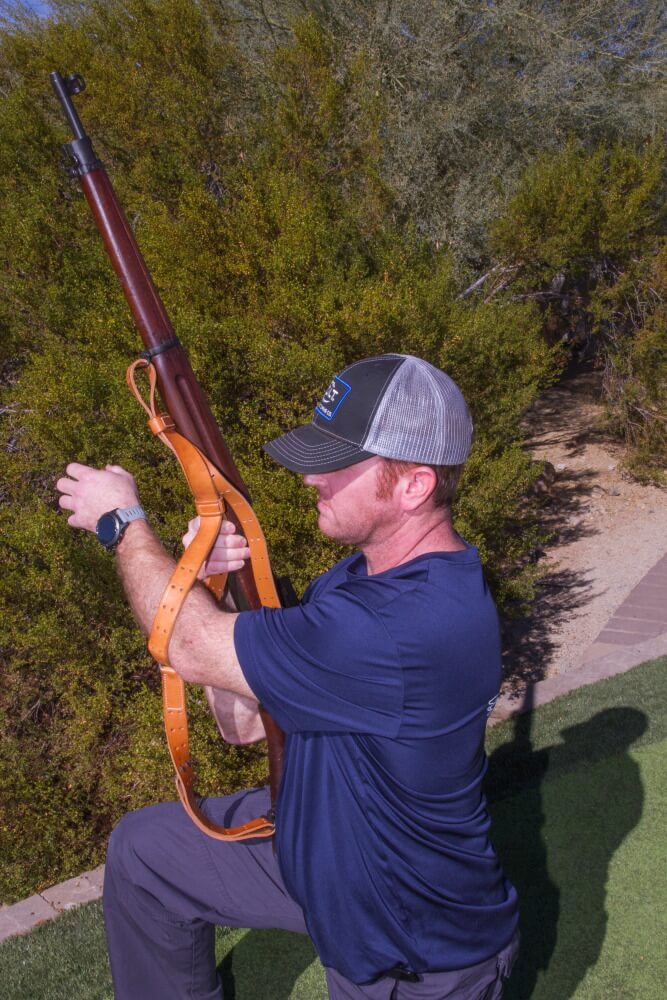
With the rifle’s buttstock resting on the shooter’s right – strong side – hip, the gun is cradled in the right arm to stabilize it so that both hands can be used to open the loop formed by the long strap. The sling is then rotated about 1/4 turn clockwise so that the support arm can be thrust from the right side of the loop through the loop formed with the long strap. The loop is then pulled up the support arm, above the bicep, all the way up to the armpit. Then the leather keeper is drawn towards the short strap to hold the loop tightly around the upper part of the support arm. The long strap is then wrapped around the support arm, and the support hand is pushed all the way forward against the front sling swivel. When done correctly, the sling’s long strap lays flat against the back of the support hand.
It is important that the sling is held very tightly against the support hand and the rifle is pushed hard into the support shoulder. If it is not uncomfortable and very tight, it is not done correctly. You may have to shorten or lengthen the sling to get it right. It should be so tight that the rifle’s buttstock will stay put in the shoulder when the shooter is relaxed. And it should take real effort to get the buttstock of the rifle into the shoulder pocket. But to work properly, the support arm must be supported on some type of rest. Otherwise, the arm will not be steady. If done correctly, the strap forms the top side of a triangle with the support arm forming the other two sides of the triangle.
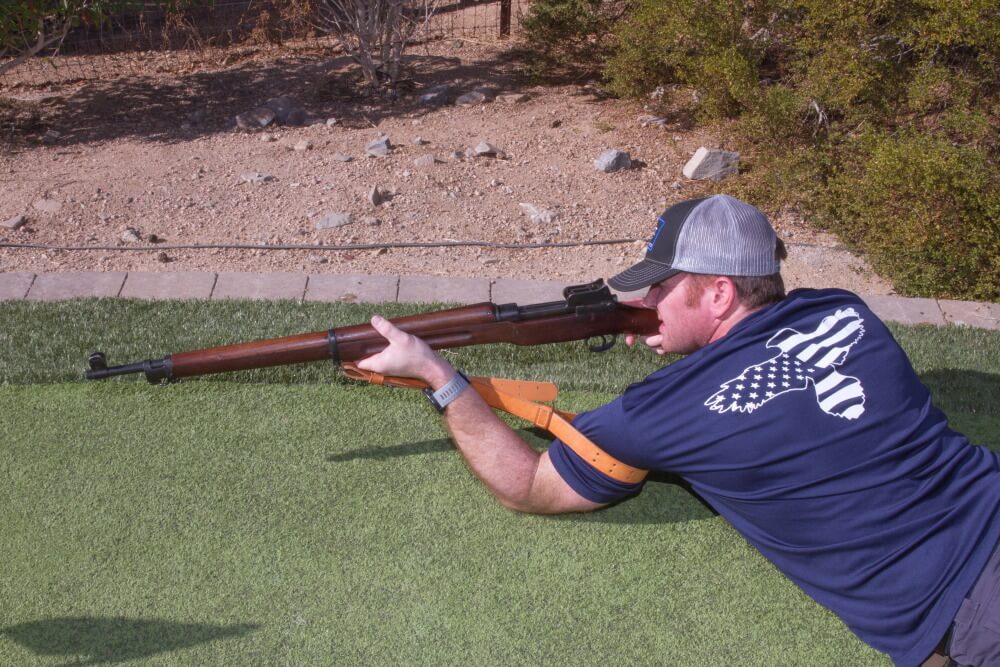
There are other types of slings, and I may miss some because innovators bring out new products so fast it is difficult to stay up to date. For example, Galco recently introduced a specialized sling called the Riflemann Sling designed by writer Richard Mann that has special characteristics and is a bit different than the other slings described here. So, although some slings you may know about are not mentioned, that does not mean they are no good. Other examples are the Ching Sling, CW Sling and the Rhodesian Sling. Check out the offerings by Andy’s Leather and Simply Rugged Holsters.
A simple carry strap is not very useful as an aiming aid but is essential as a carry accessory. Then there are the specialized tactical carry slings that aren’t meant to be an aiming aid, but that are specially designed to help carry the long gun and allow fast access to it for self-defense.
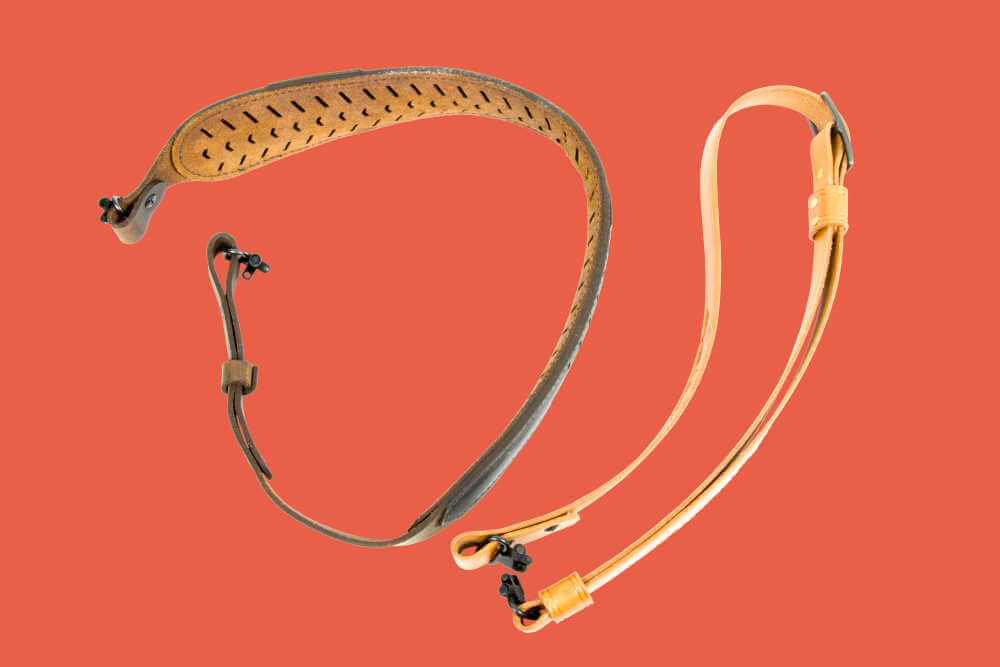
There are basically three general types of tactical slings. We’ll call them tactical because their primary purpose is to provide a way to carry a long gun for quick access in an emergency. The types are single point, two point, and three point. The names refer to the number of attachment points the sling uses to attach to the rifle.
And speaking of attachments, there is more than one way to attach a sling. One is with a Quick Detach (QD) sling socket. Various manufacturers call the sockets different things, but basically, it is a socket into which a male end on the sling is inserted. To remove it, a button is pressed at the same time the male end is removed. Another method is a stud to which a sling swivel with a QD feature is attached. Regardless of the attachment method, it is a good idea to periodically check the attachments to make sure they are not coming loose. More than one expensive rifle has been damaged when the sling attachment gave way and the gun was dropped.
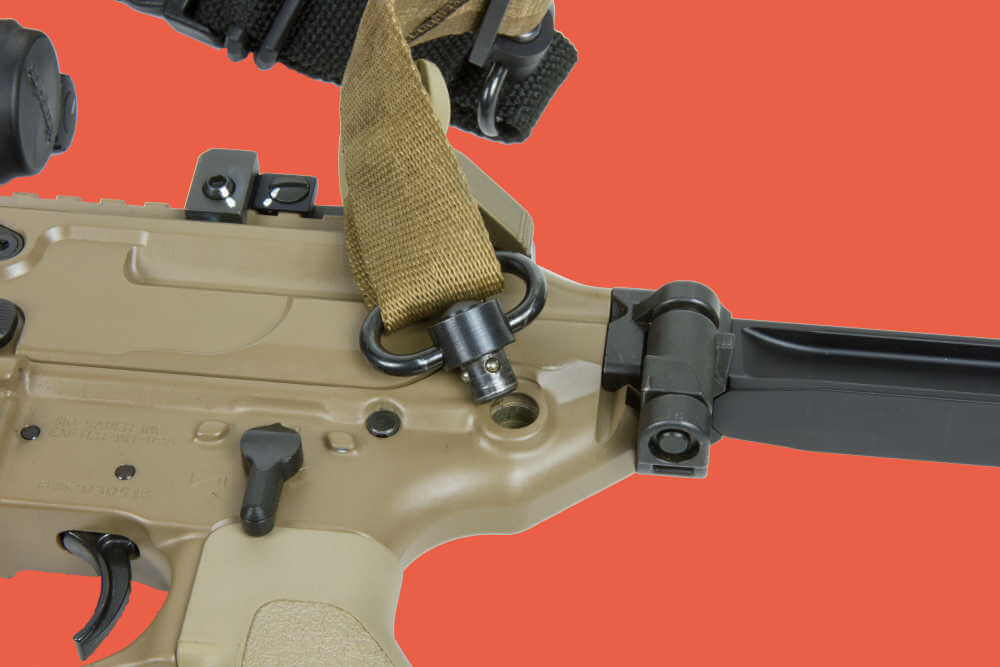
The single point sling is the simplest to operate and the easiest to attach to the gun. Generally, the shooter puts the sling loop around his or her upper body with the weak side arm fully through the loop. An alternative is to loop the sling over the neck, not including either arm. The sling is then attached to the gun at a single point often someplace on the lower receiver. The gun is allowed to dangle loosely when being carried. But to steady the gun and keep it from bouncing around when carried, often the carrier will place one hand on the gun itself to steady it.
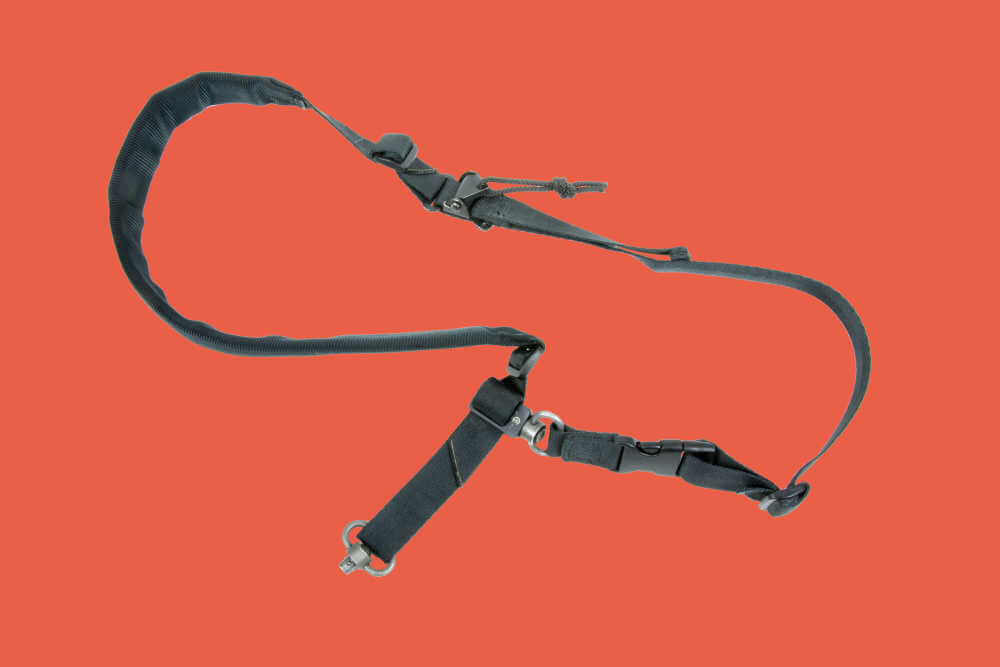
Another type of tactical sling is the two point sling. As its name implies, the sling attaches to the gun at two attachment points. Most of the time, one attachment point is near the rear of the gun someplace on the buttstock. The other attachment point often used is someplace on the fore-end, although some AR-15s are set up with an attachment point somewhere near the front of the upper receiver. The gun is then allowed to hang around the shooter’s body and dangle diagonally in front of the chest or stomach. It is very quick then to grab the gun and bring it to the shoulder to shoot.
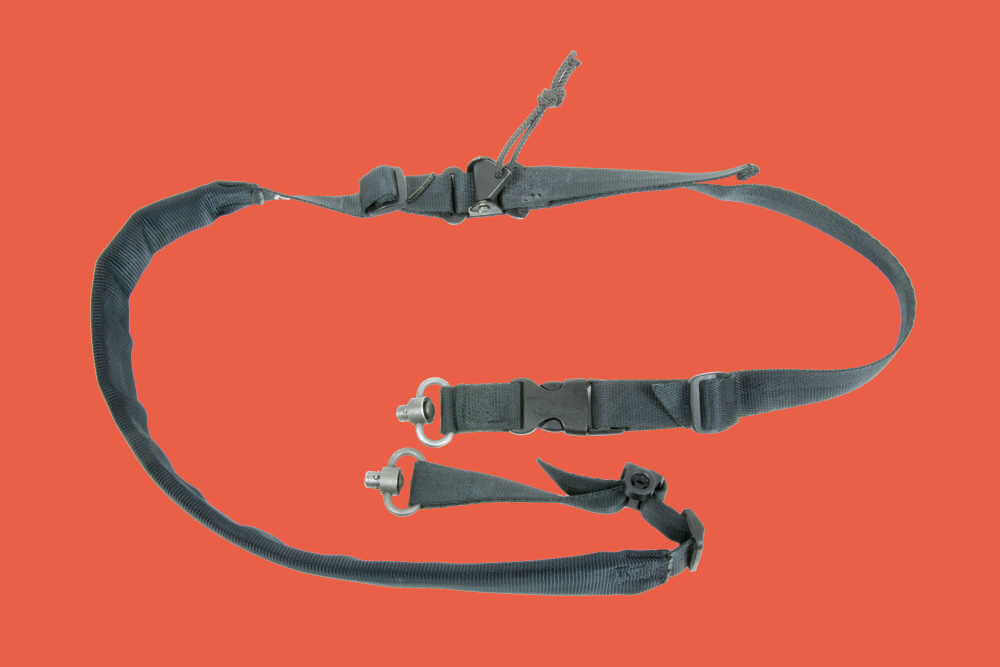
The third type of tactical sling used to be more popular than it now is. It attaches to the gun at three points and allows the gun to dangle in front of the shooter’s stomach or chest just like the two point sling allows. Since two point slings are simpler to make and simpler to attach to the gun, the three point sling has fallen from favor because it doesn’t really offer any advantages beyond what the two point sling does.
Regardless of the style of sling, be careful of the material. Some material is slick so that when the sling is put over the shoulder to carry the gun, the gun slips off the shoulder. So choose a sling material that will stay put on your shoulder.
Here’s another thing to consider if you want a single point sling. Although a single point sling is simple to use and attach to the gun, there is less control over the gun when it is slung over the shoulder or around the chest. With a single point sling, the gun dangles with the muzzle usually pointing straight down. When walking, the gun bounces around and if the gun is hung in front of the legs, the legs bump into the gun. A solution is to rotate the sling so that the gun hangs down the shooter’s side. That way, the legs don’t bump into the gun when walking, and a hand can be placed on the buttstock to steady the gun when it is carried.
A single point sling is very good for working around vehicles, but the gun dangles uncontrolled to a greater degree than with other slings. So consider all the variables when selecting a sling. You may have to try a few out before deciding which type of sling you prefer, but keep in mind that it is a personal choice. You decide for yourself. Don’t let anyone else tell you what sling is the best because they all have their pros and cons for certain situations. For example, some people will disparage a tactical sling because when the gun is slung, it is difficult to use as a striking instrument. Of course, that may not be a consideration for you. So consider all the variables and then decide if a particular problem, like difficulty using the gun as a striking instrument, really matters to you.
I use a single point with the quick detach connectors. It works great for carrying at your side and can deploy quickly to line of sight. Once at the shooting house, with heavy clothing, I can remove the sling with ease while seated.
Single point slings are “nut knockers” when moving. Also, single point slings are know as “post hole diggers” when kneeling. Nothing better than driving your muzzle in the ground.
USGI web sling…easier to use than the 1907, cheaper and solid as a bench once you learn how to use it.
Very enlightening. Which sling is recommended for an AR-15 used for deer hunting?